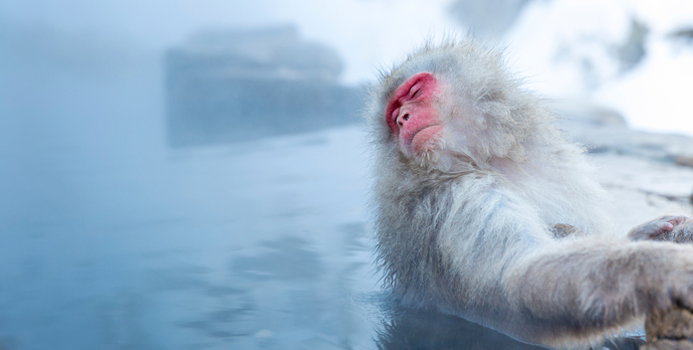Hot springs have been called “fountains of youth” for the anti-aging effects that mineral water can have on skin. But, that doesn’t mean they’re 100% sanitary.
What are hot springs?
Unbeknownst to most people who live upon the earth’s surface, the earth’s core is pretty freakin’ hot. It’s so hot, it’s molten.
If you were to say, try to dig a hole to China, the deeper you got, the hotter you would feel. You would be encountering something called geothermal—keyword thermal—energy. Some people even heat their homes with this energy.
So what does all of this have to do with hot springs? Hot springs are created when rain seeps through cracks in rocks leading down towards the earth’s surface. On its way, it picks up minerals such as sulfur and radium and becomes hotter the further down it goes.
But sometimes, this water encounters fault line or crack, and pressure underground forces it quickly back up to the surface. The result? Mother Nature’s hot tub.
So, just how sanitary are hot springs?
It depends. Commercial or developed hot springs, which charge an entry fee, are generally safe, at least in the United States. Most of the larger ones are required by law to treat and purify their water. Though they’re likely to be far less rustic than you had in mind, they make up for it in cleanliness.
Backcountry or wild hot springs are another story. Many are not monitored, though you might find some signage at the site detailing the risks associated with taking a dip. Some of these risks might include:
- Red spider mites. Pesky mites have been known to ruin a good soak, with infestations previously reported at hot springs in California, Idaho, Nevada, and Oregon. Though they’re difficult to see with the naked eye, you’ll know if you’ve been bit by one. Bites may last up to two weeks, but other than the itch, they don’t pose a health threat. The best way to avoid bites is to scan the area first and hang any personal belongings far from the water. If bit, try not to scratch. Anti-itch cream is your best bet.
- Amoebas. In 2007, a string of six fatalities in American hot springs in Texas, Arizona, and Florida pointed to the danger of soaking in tainted water. An amoeba known as Naelgeria flowleri, which occurs naturally in lakes and hot springs, enters the body through the nasal passages and attacks the brain. Other amoebas, such as acanthamoeba pose a similar threat. Though they are rare, infections are nearly always fatal. Keep in mind that skin contact is not enough for the amoeba to get in. Don’t go underwater, inhale spray, or stand up under running hot spring water. Most hot springs with reported amoebas are signed.
- Stagnant water. The more flow you see in the water, the more likely you are to be in for a safe soak. Still water is more prone to infestations and poor quality—evidence of which you might see sitting on the surface of the water in the form of foam, silt, or gook.
It’s always a good idea to spend some time researching the hot spring before you go. Online forums can give you an idea of others’ experiences. In order to know the risks, you should always read posted signage before taking a dip.
[Image via Getty]



